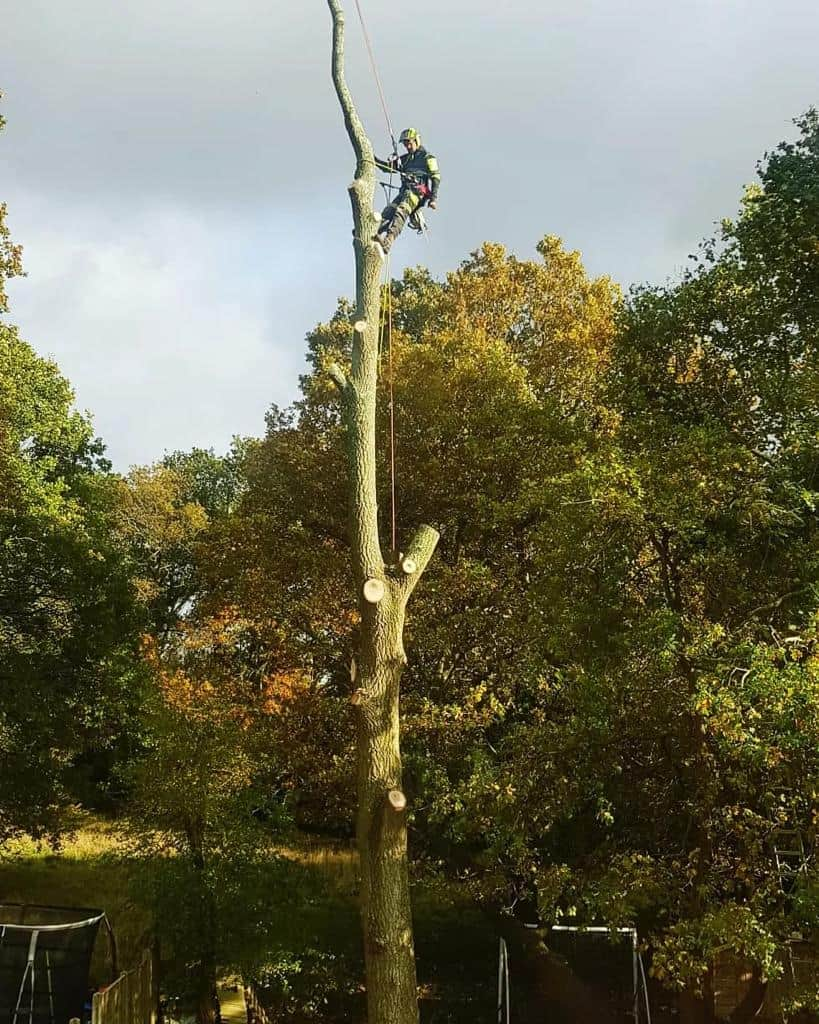Trees are a valuable part of any landscape, but they can also pose risks if they are damaged, diseased, or structurally compromised. Understanding tree risk is essential to maintaining safety and preventing property damage. At LM Tree Surgery Swanmore, based in Swanmore, Hampshire, we use a combination of visual inspections and advanced diagnostic techniques to assess the health and stability of trees. In this blog post, we’ll explain how tree surgeons evaluate tree risk, helping homeowners understand when intervention may be necessary and how to keep their trees safe and healthy.
1. The Importance of Tree Risk Assessment
Trees can develop problems over time, such as weakened branches, disease, or internal decay, that may not be immediately obvious to the untrained eye. Regular tree risk assessments are vital for identifying these issues before they lead to accidents or damage.
- Safety: Weak or damaged trees can pose a serious safety risk, particularly in high winds or during storms. A thorough risk assessment helps prevent accidents caused by falling branches or entire trees.
- Preventing property damage: Trees near buildings, driveways, or power lines need regular evaluation to avoid damage to property or infrastructure.
- Preserving tree health: Early detection of disease or structural issues allows tree surgeons to take action to save a tree before the problem becomes too severe.
2. Visual Inspections: The First Step in Assessing Tree Risk
The initial step in any tree risk assessment is a thorough visual inspection by a trained tree surgeon. This inspection focuses on key indicators of health and structural integrity.
- Trunk inspection: The tree’s trunk is examined for signs of decay, such as cavities, cracks, or fungal growth. These are often indicators of internal decay, which weakens the tree and increases the risk of collapse.
- Branch inspection: Tree surgeons look for dead or dying branches, which are more likely to fall unexpectedly. The condition of the branches is a good indicator of the tree’s overall health.
- Root inspection: Roots are the foundation of a tree’s stability. A visual inspection will check for signs of root rot, soil heaving, or exposed roots, which can indicate instability.
- Crown inspection: The tree’s crown (the upper part of the tree) is inspected for overall structure and balance. Trees with unbalanced crowns may be more susceptible to wind damage, and thinning foliage could be a sign of disease.
3. Advanced Diagnostics: Going Beyond the Surface
While visual inspections provide valuable insights into a tree’s condition, some risks may not be immediately visible. Advanced diagnostic techniques allow tree surgeons to detect hidden issues that could pose serious risks.
- Resistograph testing: This method involves using a specialised tool to drill a small hole into the tree, measuring the resistance as it passes through the wood. Areas of low resistance indicate decay or rot within the tree, even if the outer appearance seems healthy.
- Tomography: Tree tomography uses sound waves or electrical impulses to create an image of the tree’s internal structure. This technique is particularly useful for identifying internal decay or hollow sections that may not be visible during a visual inspection.
- Aerial inspections: For tall or hard-to-reach trees, aerial inspections using drones or climbing arborists allow for a closer look at the tree’s upper branches and canopy. This can help identify potential risks that might otherwise go unnoticed.
4. Common Risk Factors Identified by Tree Surgeons
During a risk assessment, tree surgeons look for a variety of issues that could compromise a tree’s stability or health. Some of the most common risk factors include:
- Dead or dying branches: Dead wood is more likely to break off during high winds or storms, posing a safety risk to people and property.
- Leaning trees: A tree that has started to lean may indicate root instability or trunk damage. While not all leaning trees are dangerous, it’s important to assess the cause.
- Fungal growth: Certain types of fungi are indicators of internal decay. For example, bracket fungi growing on the trunk can suggest that the internal structure of the tree is compromised.
- Cracks or splits: Cracks in the trunk or major branches weaken the tree’s structural integrity and increase the likelihood of breakage.
- Root damage: Root damage, often caused by nearby construction or heavy foot traffic, can destabilise a tree, making it more prone to toppling.
5. When to Call a Tree Surgeon
If you notice any of the following signs in your trees, it’s important to call a professional tree surgeon to assess the situation:
- Large dead branches
- Visible cracks or splits in the trunk
- Fungal growth on the trunk or branches
- The tree is leaning significantly
- Unusual thinning of foliage or yellowing leaves
- Root exposure or soil heaving around the tree’s base
Early intervention can prevent accidents and help preserve the health of the tree. Regular tree risk assessments, especially for large or mature trees, can help identify problems before they become dangerous.
Conclusion
Tree risk assessment is a critical part of maintaining a safe and healthy landscape. By combining visual inspections with advanced diagnostic techniques, tree surgeons can accurately assess the condition of a tree and recommend the appropriate action. At LM Tree Surgery Swanmore, we provide professional tree risk assessments in Swanmore, Hampshire, helping property owners protect their trees and maintain a safe environment.
Call us on: 01489 358 695
Click here to find out more about LM Tree Surgery Swanmore
Click here to complete our contact form and see how we can help with your tree’s needs.

